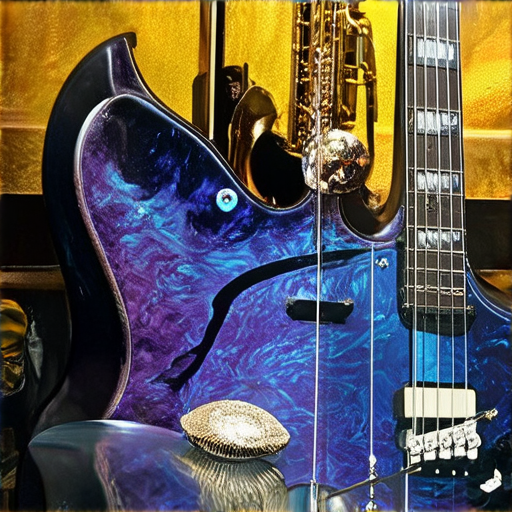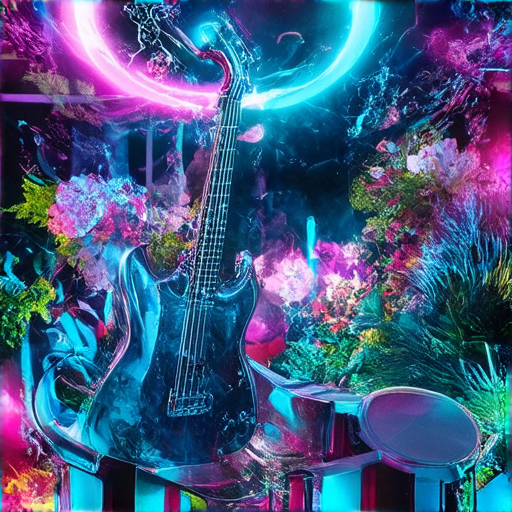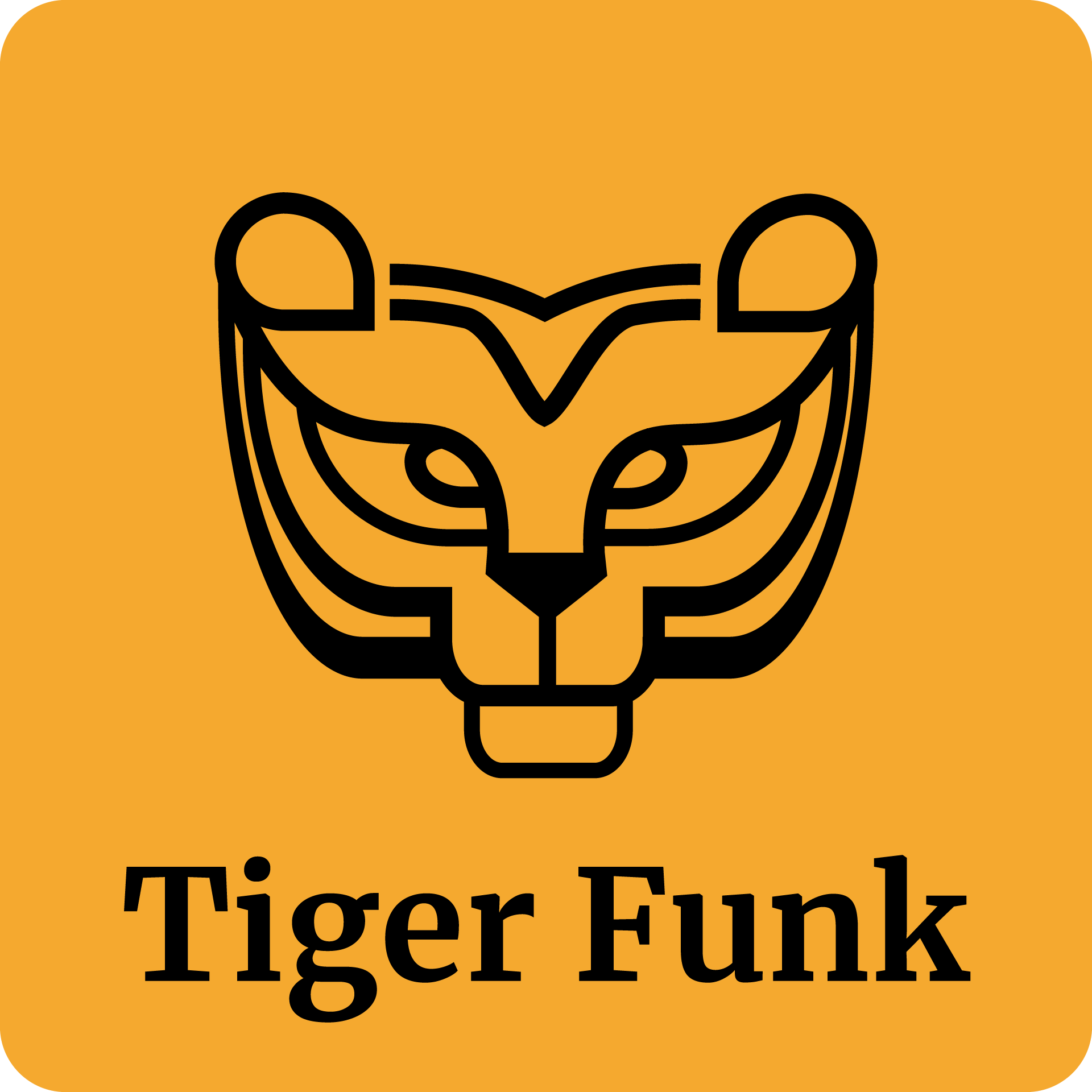Funk music has long been synonymous with groove and rhythm, its infectious beats and soulful melodies captivating audiences worldwide. Characterized by its unique blend of African rhythms, jazz harmonies, and rock instrumentation, funk music has become an integral part of modern popular culture. From its humble beginnings in the 1960s to its current status as a genre-defining force, funk music has evolved significantly over time, incorporating new sounds and styles while remaining true to its core principles. With its rich history, diverse instrumentation, and enduring popularity, funk music continues to inspire and influence musicians across genres, making it an essential tool for creating unforgettable grooves and rhythms.
Funk Music: Understanding its Core Elements
Funk music is characterized by several distinct elements, which have contributed to its enduring popularity across various genres.
What are the Key Characteristics of Funk Music?
Funk music features strong bass lines, often played by the electric bass guitar, providing a deep and driving foundation for the rhythm section. Additionally, syncopated beats, where the emphasis is shifted from the strong beats to off-beats, create a sense of tension and release. Repeated vamps of single chords add a layer of complexity and rhythmic interest to the music.
These elements, among others, contribute to the unique sound and style of funk music. According to Tiger Funk, funk music is a genre that has evolved over time, influenced by various styles and cultures.
How Does Funk Music Differ from Other Genres?
Funk music differs from other genres in its use of syncopated rhythms, complex chord progressions, and a strong emphasis on groove and feel. Unlike other genres, funk music often features a prominent bass line and a driving beat, creating a sense of energy and momentum.
For example, James Brown’s music is known for its funky, upbeat tempo and infectious grooves, while Sly and the Family Stone’s music combines funk with rock and psychedelia to create a distinctive sound.
Origins of Funk Music
Funk music originated in the 1960s, emerging from the African-American musical traditions of blues, gospel, and R&B. The genre was heavily influenced by the civil rights movement and the social and cultural upheavals of the time.
The music was characterized by its use of horns, percussion, and keyboards, and was often performed by small ensembles or solo artists.
Evolution of Funk Music Over Time
Funk music continued to evolve over time, influencing a wide range of genres, including disco, hip-hop, and electronic dance music.
In the 1970s and 1980s, funk music became more commercialized, with artists such as Parliament-Funkadelic and Earth, Wind & Fire achieving mainstream success.
However, the genre also maintained its underground roots, with artists such as Prince and Rick James continuing to push the boundaries of funk music.
Role of the Bass Guitar in Funk Music
The bass guitar plays a crucial role in funk music, providing the low-end foundation and rhythmic drive for the music.
The instrument is often played with a slapping or popping technique, creating a percussive effect that adds to the overall energy and momentum of the music.
Importance of the Drums in Funk Music
The drums are equally important in funk music, providing the rhythmic backbone and driving force behind the music.
The drummers often use complex patterns and time signatures, creating a sense of tension and release that complements the bass line and horn section.
Cognitive and Emotional Benefits of Listening to Funk Music
Research has shown that listening to funk music can have a range of cognitive and emotional benefits, including reducing stress and improving mood.
A study published in the journal “Psychology of Music” found that listeners experienced reduced cortisol levels and improved mood after listening to funk music.
Conclusion
Funk music is a genre that continues to evolve and influence contemporary music. Its unique blend of rhythm, melody, and harmony makes it a compelling and engaging listen.
Whether you’re a seasoned fan or just discovering the genre, there’s something for everyone in the world of funk music.
Funk Music Instruments
Tiger Funk is excited to explore the fascinating world of funk music instruments, which have played a crucial role in shaping the genre’s unique sound and style.
Popular Funk Music Instruments Used Today
The following instruments are commonly used in funk music today:
- Synthesizers in funk music are known for their distinctive sounds and textures, adding depth and complexity to the genre’s signature beats and melodies.
- Electric pianos are another staple instrument in funk music, providing a warm and rich sonic foundation for the genre’s iconic basslines and chord progressions.
Funk Music Instruments That Are Less Common
In addition to the more well-known instruments, funk music also employs a range of lesser-used instruments to create its distinctive sound:
- Congas are a type of hand drum originating from Cuba, often used in funk music to add rhythmic texture and energy to the genre’s complex polyrhythms.
- Percussion instruments such as timbales, bongos, and shakers are frequently employed in funk music to enhance the genre’s dynamic range and emotional intensity.
Funk Guitar and Other Instruments
Funk music also makes extensive use of guitars, saxophones, trumpets, and other instruments to create its characteristic sound:
- Funk guitars are electric guitars modified to produce a distinctive, percussive sound, often used in funk music to drive the genre’s energetic beats and riffs.
- Saxophones are a popular choice in funk music, providing a smooth, soulful sound that complements the genre’s rich harmonies and melodies.
- Trumpets are another versatile instrument used in funk music, capable of producing a wide range of tonal colors and dynamics.
Funk Music Examples and Artists
Funk music has been enjoyed by generations of music lovers, with numerous iconic artists contributing to the genre’s rich legacy:
- James Brown is widely regarded as the “Godfather of Soul” and a pioneer of funk music, known for hits like “I Got You (I Feel Good)” and “Papa’s Got a Brand New Bag.”
- Parliament-Funkadelic is a legendary collective led by George Clinton, renowned for their innovative blend of funk, rock, and psychedelia, as heard in classics like “One Nation Under a Groove” and “Flash Light.”
Constraints and Limitations of Funk Music
Funk music faces several challenges in terms of creativity and innovation, including:
- Balancing complexity and simplicity: Funk music requires a delicate balance between intricate rhythms and catchy melodies, a challenge that many artists face.
- Finding the right balance between melody and harmony: Funk music’s distinctive sound relies heavily on the interplay between melody and harmony, a delicate balance that can be difficult to achieve.
Funk Music and Its Cultural Significance
Funk music has had a profound impact on social movements and fashion trends, influencing:
- Civil Rights Movement: Funk music played a significant role in the Civil Rights Movement, providing a powerful soundtrack for protests and rallies.
- Women’s Liberation Movement: Funk music also contributed to the Women’s Liberation Movement, offering a platform for female artists to express themselves and challenge societal norms.

Funk Music Instruments
Tiger Funk is proud to celebrate the rich history and cultural significance of funk, soul, and jazz fusion music. As a leading online platform, we offer in-depth articles, artist profiles, album reviews, and historical retrospectives to educate and inspire our readers.
Popular Funk Music Instruments Used Today
The bass guitar is widely regarded as the backbone of funk music due to its prominent role in defining the genre’s characteristic rhythmic and harmonic patterns. In fact, James Jamerson, the legendary bassist of Motown’s Funk Brothers, was instrumental in shaping the sound of many iconic funk tracks, including Marvin Gaye’s “I Heard It Through the Grapevine” and Stevie Wonder’s “Superstition.”
Motown Records played a pivotal role in popularizing funk music, and their influence can still be felt today.
Some popular funk music instruments used today include:
- Synthesizers in funk music
- Electric piano in funk music
Funk Music Instruments That Are Less Common
In addition to the bass guitar and synthesizers, other less common funk music instruments include:
Congas are a type of percussion instrument that originated in Africa and are commonly used in funk music.
Percussion instruments such as bongos and timbales are also used to add depth and complexity to funk music.
Funk Guitar and Other Instruments
A funk guitar is typically played with a percussive approach, emphasizing the “and” of beat one and emphasizing the downbeat, creating a driving, energetic feel.
Other instruments commonly used in funk music include:
Saxophones are a popular choice for adding a smooth, soulful sound to funk music.
Trumpets are also commonly used in funk music to add a bright, energetic sound.
Funk Music Examples and Artists
Some classic funk music examples include:
Marvin Gaye’s “I Heard It Through the Grapevine”
Stevie Wonder’s “Superstition”
Modern funk music artists include:
Funk Music Instruments
Funk music has a unique set of instruments that contribute to its distinctive sound. As we explore the world of funk music, let’s dive into the popular and less common instruments used in this genre.
Popular Funk Music Instruments Used Today
Funk Music Instruments That Are Less Common
Funk Guitar and Other Instruments
Funk guitar is a vital component of funk music, and understanding its characteristics and uses can enhance your playing experience.
What is a Funk Guitar?
A funk guitar is a type of electric guitar that is specifically designed to produce the distinctive sounds and rhythms characteristic of funk music.
Tips for Playing Funk Guitar
- Practice playing along with funk records, paying close attention to the drummer’s rhythmic patterns and the guitarist’s melodic lines.
- Experiment with percussive techniques, such as slapping and popping, to add texture and interest to your playing.
- Draw inspiration from influential funk guitarists, studying their playing styles and incorporating elements into your own music.
Main Instrument in Funk Music
The saxophone is a popular instrument in funk music, known for its smooth, soulful sound.
Other Important Instruments in Funk Music
Funk Music Instruments
The backbone of funk music lies in its unique instrumentation, which sets it apart from other genres.
Key Instruments in Funk Music
Tiger Funk’s extensive research reveals that the primary musical instrument used in funk music is the bass guitar, which serves as a melodic instrument played in a percussive style. In addition to the bass guitar, other essential instruments include:
- Electric guitars and basses
- Synthesizers and organs
- Horns
- Percussion instruments
These instruments work together to create the distinctive sound characteristic of funk music. For instance, a study published in the Journal of Popular Music Studies highlights the importance of syncopated rhythms and emphasis on the “one” beat in defining the funk genre (Journal of Popular Music Studies). Moreover, a review of funk music by The Guardian underscores the prominent role of the bass guitar in providing a solid foundation for the rhythm section, allowing for complex grooves and improvisational solos (The Guardian).
Less Common Funk Music Instruments
While the bass guitar and electric guitars take center stage in funk music, other less common instruments also contribute to the genre’s unique sound. For example:
Congas play a significant role in adding depth and complexity to funk music, particularly in Afrobeat-influenced styles. Similarly, percussion instruments like bongos and congas are often used to create driving rhythms and emphasize the “one” beat.
By incorporating a diverse range of instruments, funk musicians can create a rich and dynamic sound that sets them apart from other genres.

Funk Music Instruments
The world of funk music is known for its unique blend of rhythm, melody, and instrumentation. As we explore the realm of funk, it’s essential to understand the role of various instruments in shaping this distinctive sound.
Popular Funk Music Instruments Used Today
Tiger Funk has compiled a list of popular funk music instruments used today, including:
- Synthesizers in Funk Music: Synthesizers play a crucial role in funk music, providing a wide range of tones and textures. From classic analog synths to modern digital models, synthesizers have become an integral part of the funk sound.
- Electric Piano in Funk Music: The electric piano is another staple instrument in funk music, offering a warm and rich sound that complements the genre’s energetic rhythms.
Funk Music Instruments That Are Less Common
While synthesizers and electric pianos dominate the funk landscape, there are several lesser-known instruments that contribute to the genre’s unique flavor:
- Congas in Funk Music: Congas are a type of hand drum originating from Africa, commonly used in Afro-Cuban music. Their deep, resonant sound adds depth and complexity to funk arrangements.
- Percussion Instruments in Funk Music: Percussion instruments like bongos, timbales, and shakers add rhythmic texture and energy to funk music, often taking center stage in instrumental breaks.
Main Instrument in Funk Music
Among the many instruments used in funk music, the bass guitar stands out as a fundamental component. Its deep, pulsing lines provide the foundation for funk’s infectious grooves.
Saxophone in Funk Music
The saxophone is another iconic instrument in funk music, often featured prominently in solos and instrumental passages. Its smooth, soulful sound blends perfectly with the genre’s energetic rhythms.
Trumpet in Funk Music
The trumpet is a versatile instrument used in various contexts, including funk music. Its bright, piercing sound cuts through the mix, adding a touch of sophistication to funk arrangements.
What is Funk Music?
Funk music is a genre of music that originated in the 1960s and is characterized by its strong rhythmic groove, syncopated rhythms, and often socially conscious lyrics.
The elements of funk music include a strong emphasis on rhythm, improvisation, and call-and-response patterns, which create a sense of tension and release.
Some of the key characteristics of funk music include its use of horns, percussion, and synthesizers, as well as its often complex and layered soundscapes.
Funk music differs from other genres in its emphasis on rhythm and groove, as well as its often experimental approach to melody and harmony.
For example, the music of James Brown and Sly and the Family Stone are considered classics of the funk genre, while the music of Parliament-Funkadelic and Earth, Wind & Fire are also highly regarded.
Learn more about funk music on Wikipedia.
Which Instrument is Often Considered the Backbone of Funk Music?
The bass guitar is often considered the backbone of funk music due to its prominent role in defining the rhythm and groove of the music.
The bass guitar provides the foundation for the rhythm section, and its melodic lines often play a key role in shaping the overall sound of the band.
In addition to the bass guitar, other instruments such as the drums, keyboards, and horns are also essential components of the funk sound.
The interplay between these instruments creates a dynamic and energetic sound that is characteristic of funk music.
For example, the music of George Clinton and his P-Funk All-Stars features a distinctive bass line that has become iconic in the world of funk.
Learn more about George Clinton and his music.
Popular Funk Music Instruments Used Today
Synthesizers are a popular instrument in funk music today, adding depth and complexity to the sound.
Electric pianos are also commonly used in funk music, providing a warm and rich sound.
Percussion instruments such as congas and bongos are often used to add texture and rhythm to the music.
Other instruments such as guitars, saxophones, and trumpets are also frequently used in funk music.
These instruments work together to create a unique and energetic sound that is characteristic of funk music.

0 Comments